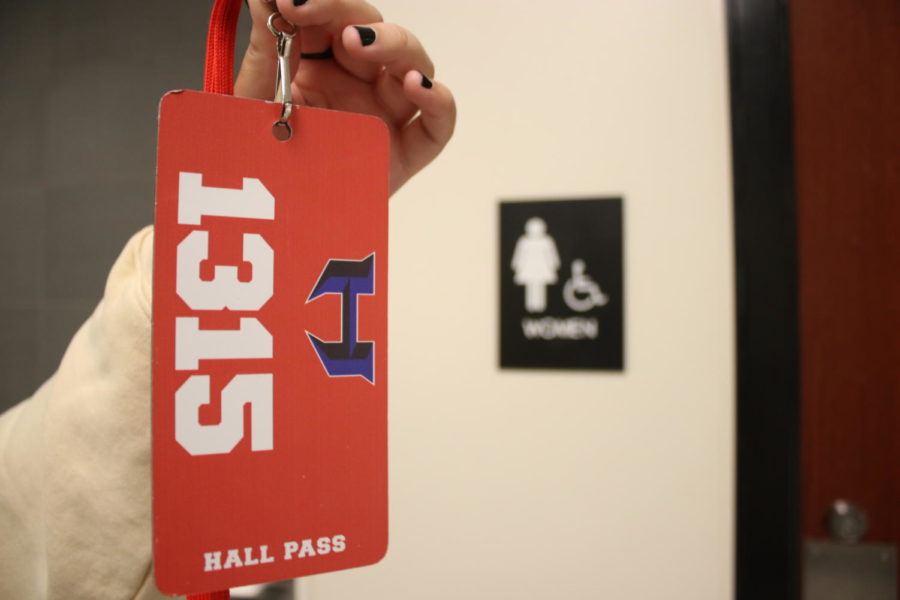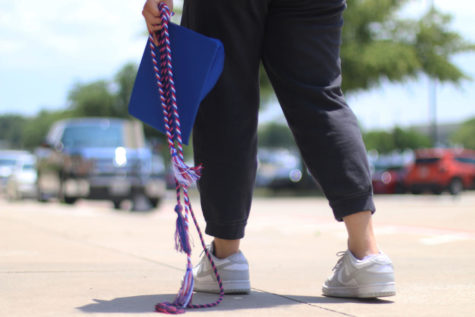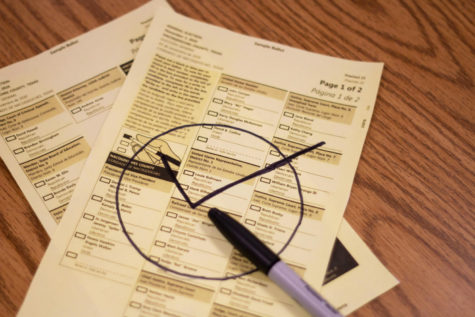Staff Editorial: New advisory bathroom restrictions are unrealistic
A hall pass in front of the women’s restroom in the 1300 hallway.
As the school year begins, students are learning to readjust to their academic routines. A new year often brings a change in policies, and there has been a rather impactful adjustment made to advisory. Students are now prohibited to go to the restroom during the allotted time period unless there is an ‘emergency.’ This rule is unrealistic and endangers students’ health and wellbeing.
Deciding what constitutes a bathroom ‘emergency’ is subjective and something a teacher can not realistically determine. There are many factors to take into consideration. Asking a student to convince their teacher that their need is an ‘emergency’ is embarrassing. A student may have a sudden bowel movement or menstrual leak and the effects of ignoring your body’s personal needs not only may lead to embarrassing accidents, but are also unhealthy.
Female students can develop toxic shock syndrome, a rare, yet often fatal bacterial infection due to an overdue pad or tampon being used. If students are refused a bathroom break, they must resort to holding in urine or feces, leading to the possibility of developing constipation and urinary tract infections. If that paragraph was uncomfortable for you to read, imagine having to say it to your teacher.
The expectation is that students should use the bathroom before advisory, which sounds good on paper; however, students don’t have enough time to go during passing periods. With only six minutes in between classes, if a student were to have a class on the second floor and the next period were to be on the first floor, the amount of time to get down the stairs through crowded hallways, toward the restrooms and wait in line for a stall would easily surpass the time of six minutes.
From a poll administered on the “The Hawk Eye” Instagram account, with a following of predominantly students, 67% of 100 followers who responded said they did not feel they had enough time to use the bathroom during passing periods. If passing periods are not enough time for students to use the restroom, leaving during class is the last option. For some students, this can be a disruption to essential lectures and obtaining notes in their classes.
There are two possible solutions to this issue.
First, is a compromise for both administration and students: trim down advisory from 35 minutes to only 15. Most state-mandated lessons take around 15 minutes to complete if the class is on-task for the entirety of the period. With this adjustment, students could gain a few extra minutes during passing periods to handle their business before their classes.
If a change to the bell schedule isn’t the ideal course of action — which would admittedly cut down on club meetings — another option could be removing the 15 minute rule, which prohibits students from using the restroom for 15 minutes at the front and back of each class. Eliminating this rule would allow students who were unable to use the restroom during passing period to easily go at the start of class, one at a time, with the bathroom pass and permission from the teacher.
Students deserve to have their voices heard, especially when it comes to rules that directly affect their personal needs and overall health. School should be a safe environment where students feel thoroughly considered and understood. Especially with the current events involving security breaches, a comfortable, secure environment is needed now more than ever. Allowing students complete control and discretion over their bodily functions – even during advisory – is the first step toward this comfortability.

Senior Henry Pham is the visuals editor and this is his second year on staff. He spends a lot of time gaming, munching on food, listening to jazz music...














Katie • Sep 7, 2022 at 3:20 PM
I can definitely see how these restrictions are upsetting
Addison • Sep 4, 2022 at 8:59 PM
Why does the 15 minute rule even exist anyway? Why 15 minutes? As far as I know, they don’t have that rule in any other states